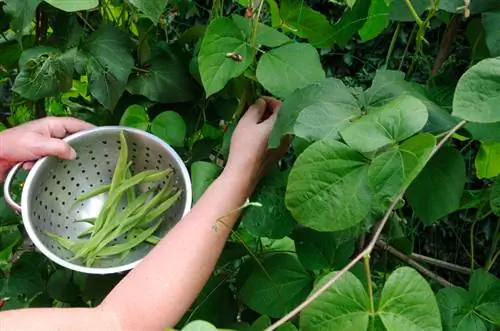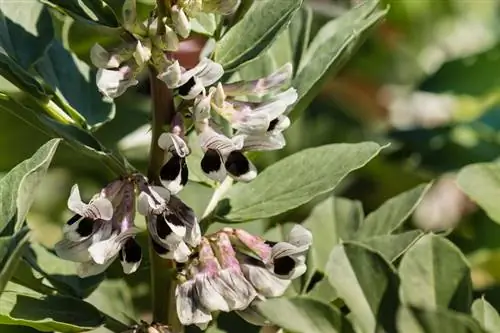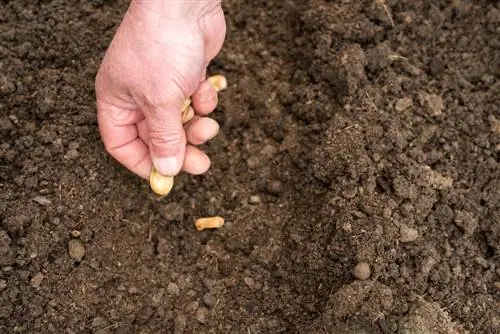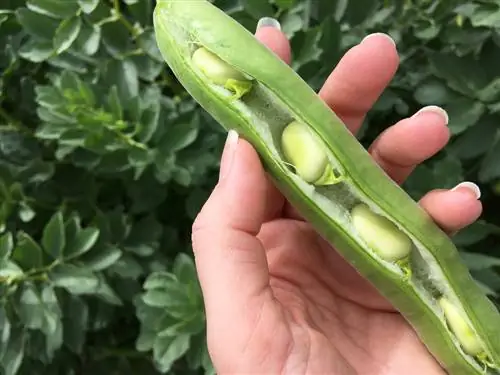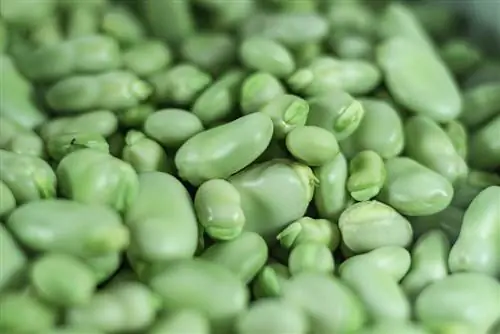- Author admin [email protected].
- Public 2023-12-29 04:51.
- Last modified 2025-06-01 06:02.
The broad bean can be prepared both fresh and dried. It is also very popular in Germany and is increasingly found in vegetable gardens. Thanks to its pretty flowers it is also very decorative. Find out below how to plant the broad bean in your garden, care for it and get a bountiful harvest.
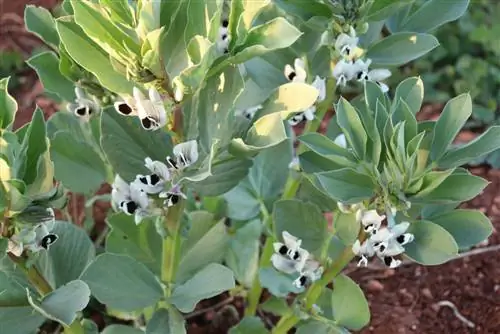
How to plant broad beans in the garden?
To plant broad beans in the garden, you should choose soil suitable for weak feeders and pay attention to crop rotation. They can be sown directly into the bed from the end of February or grown at home at the end of January. Mulching and early sowing prevent pest infestation.
Broad bean, field bean, broad bean - what is what?
The broad bean has many names. It is known by the following names, among others:
- Faba bean
- Broad Bean
- broadbean
- Fava bean
- cattle bean
- Big Bean
- Horse Bean
Sow the broad beans directly into the bed or prefer them?
The broad bean can be sown outdoors from the end of February or you can prefer your broad beans at home.
What are the advantages of moving forward?
You can already have the broad beans at the end of January. This has several advantages:
- You can harvest sooner.
- Lice infestation is prevented.
- You don't have to prick.
Instructions for preparing the broad beans can be found here.
The best location for the broad bean
The broad bean is a weak feeder, which is why the soil should not be supplied with compost before sowing. The only thing to consider is crop rotation. Since the broad bean is a legume, it should not be planted directly after another legume. Four years should pass before a legume is planted at the site of a legume again.
Big beans don't actually need any climbing support. However, large plants can be prone to tipping over in strong weather. It can therefore make sense to lean the plants against a string or a fence.
Mulching broad beans
Flat beans like it moist, which is why it makes sense to mulch them. Mulch also prevents weed growth, making gardening easier.
Pests on Broad Beans
The broad bean has a stubborn enemy: the black bean louse. They like to eat the broad bean and, if infested early, can damage the bean's flowers to such an extent that the harvest fails completely.
How do you prevent a bean louse infestation?
The earlier you sow or advance the seeds, the less likely it is that the black bean aphid will cause serious damage to your broad beans. The louse likes it warm and only attacks the plant in summer. Once it has developed enough, the pest infestation can no longer harm it.
The harvest of broad beans
Broad beans are ready to harvest when the pods are plump and bright green. Depending on the variety, this is 14 to 16 weeks after sowing. The easiest way to harvest is to use secateurs (€14.00 on Amazon) so that you can easily cut the beans off the plant. The beans can be harvested fresh from the plant or left to dry left on the plant to save the seeds for sowing or cooking. The fresh seeds of the broad bean are surrounded by a rubbery, white shell. It is not that tasty and is therefore often removed. However, it is not harmful to he alth and pulping is very time-consuming. It can therefore also be eaten without any problems. It's best to just try it out.



